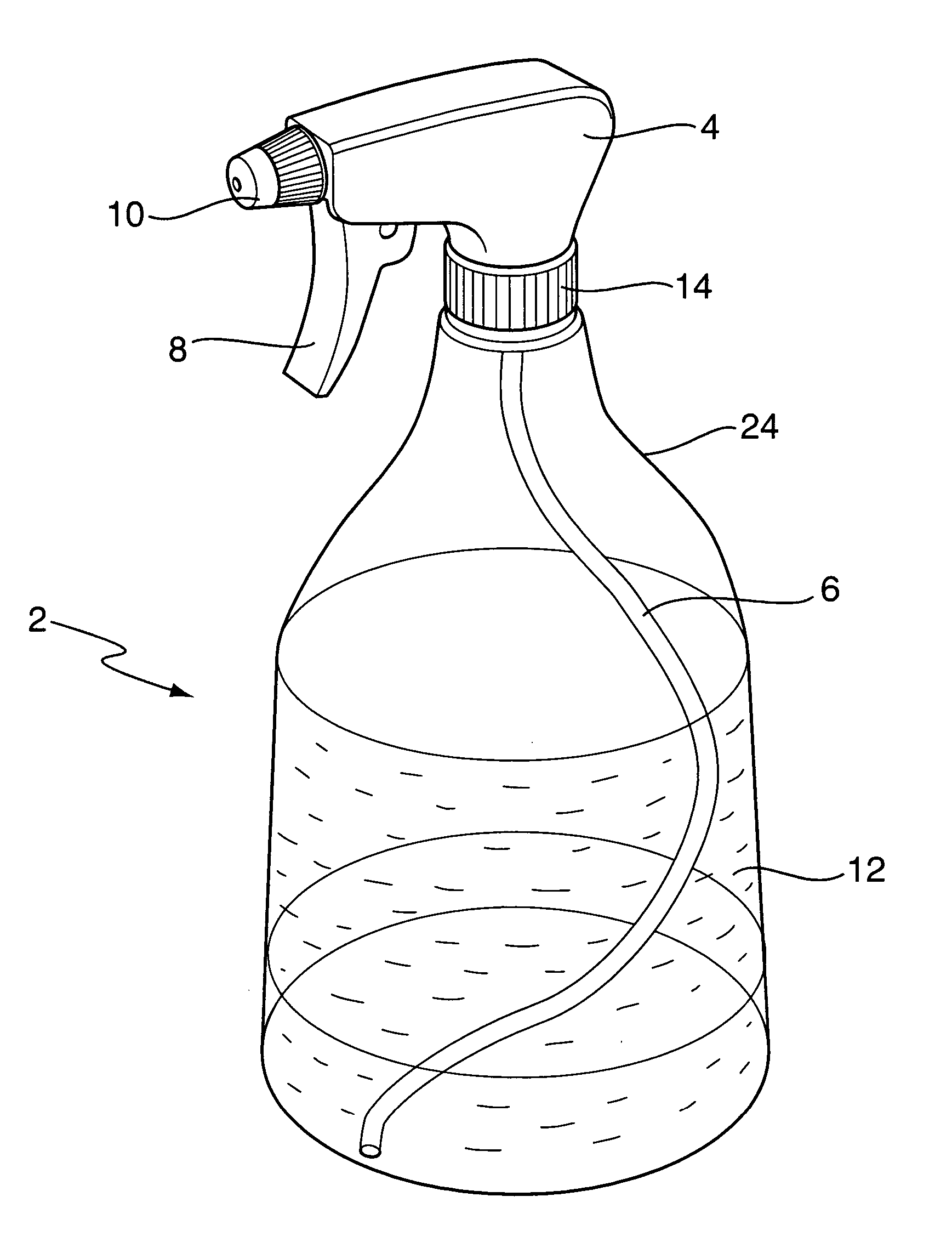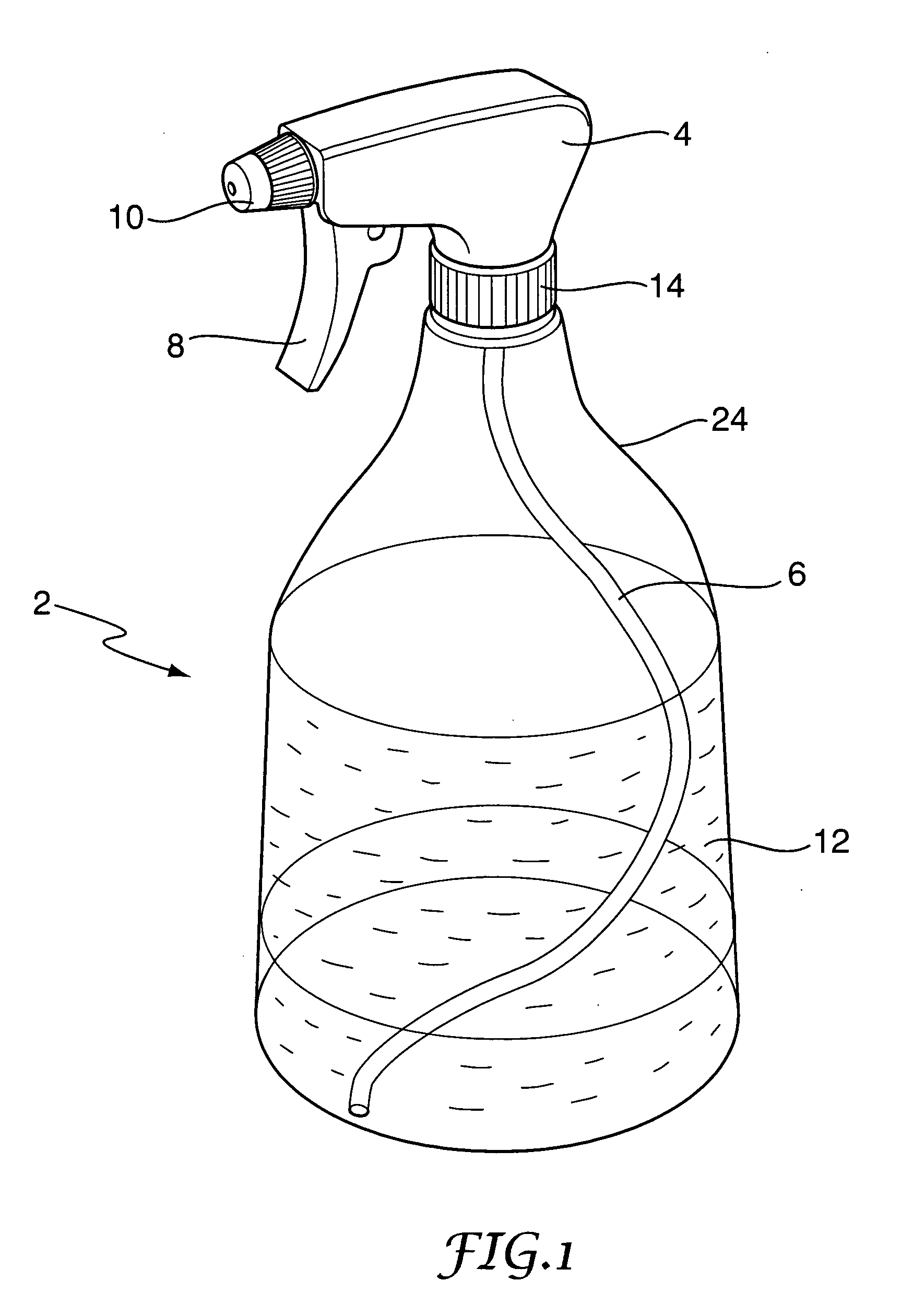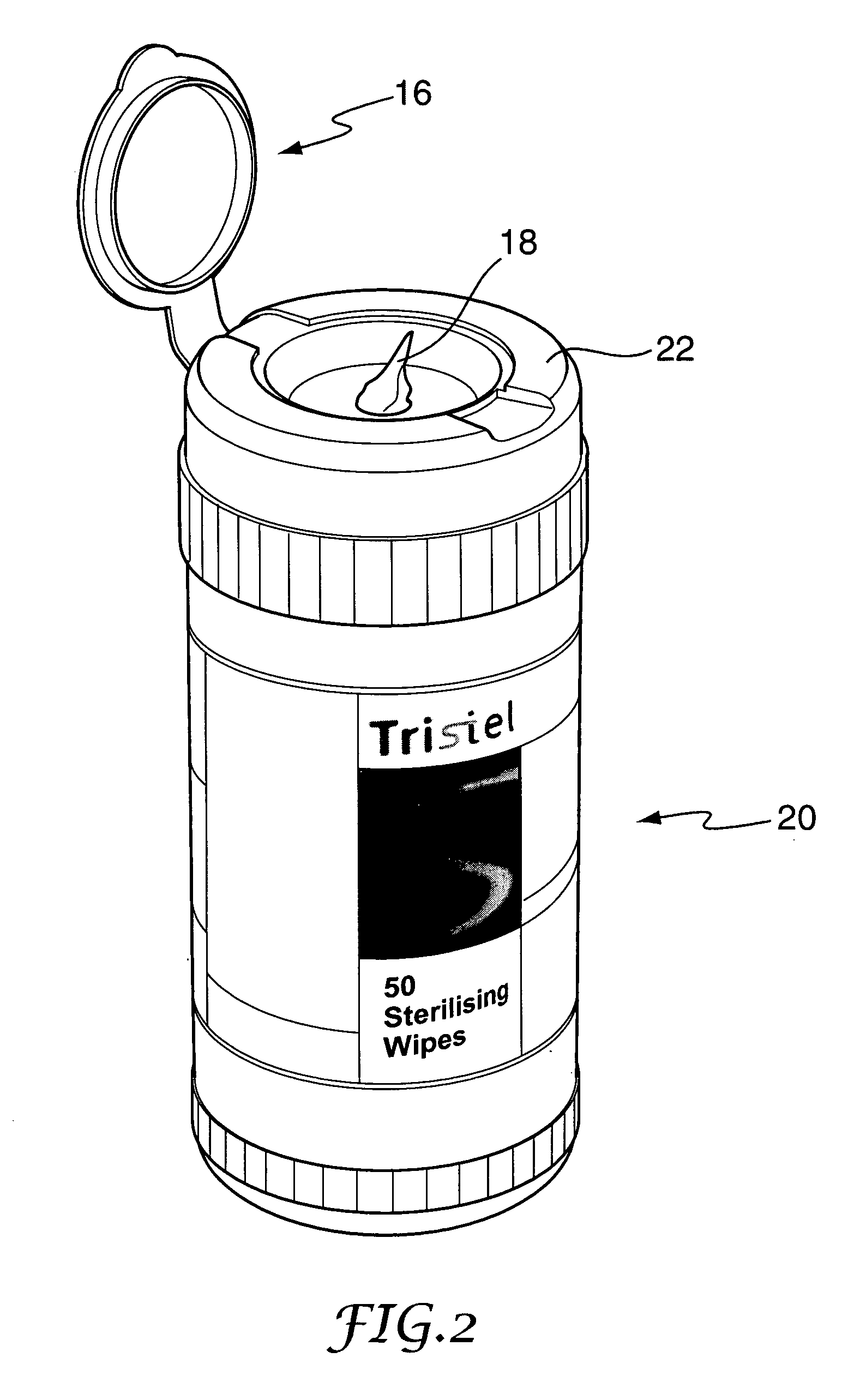Decontamination system
a technology of decontamination system and septic tank, which is applied in the direction of disinfection, water installations, construction, etc., can solve the problems of insufficient removal of sterilizant and undesirable excess of rinse water, and achieve the effects of enhancing product stability, eliminating toxic residues, and improving cleaning
- Summary
- Abstract
- Description
- Claims
- Application Information
AI Technical Summary
Benefits of technology
Problems solved by technology
Method used
Image
Examples
experiment 1
[0068] Sterising wipes 18 in accordance with one aspect of the invention were tested and compared with conventional wipes saturated with isopropanol (IPA), a general-purpose detergent, and sterile deionised water.
[0069] The test method to evaluate effectiveness of the wipes in killing / removing test organisms dried onto test surfaces, involved the following steps.
[0070] 1. Mark out a six inch (30.5 cm) square test area on the test surface.
[0071] 2. Inoculate the test surface with 0.5 ml of test organism suspension.
[0072] 3. Spread the inoculum over the test area using a plastic spreader.
[0073] 4. Allow the inoculum to dry (about 30 minutes).
[0074] 5. Don a pair of disposable plastic gloves.
[0075] 6. Prepare a ClO2 wipe in accordance with the invention, using a prescribed mixing time.
[0076] 7. Wipe the test area for the prescribed wiping time.
[0077] 8. Place the wipe in 10 ml of universal neutraliser in a Universal bottle (Test Suspension A). Vortex stir to release organisms....
experiment 2
Wipes Used in Experiment 2
[0121] 1. ClO2 Wipe (scrunch time=15 seconds).
[0122] 2. 70% IPA wipe: Azowipe (Vernon Carus).
[0123] 3. Hospec wipe: Kimberley Clark Medical Wipe immersed in 1% Hospec and then squeezed to remove excess solution.
[0124] 4. Water wipe: Kimberley Clark Medical Wipe immersed in sterile water and then squeezed to remove excess water.
[0125] Experiment 2—Results
TABLE 2ScrunchWipeViableTestDisinfectant / timetimeCount (0.5 ml)Exporganismdetergent(sec)(sec)SurfaceWipe1B.ClO21530002subtilisClO2 (repeat)153000370% IPA305.0 ×2.7 × 1031024 1% Hospec301.5 ×2.6 × 1031025Water303.0 ×2.5 × 1031016P.ClO21530007aeruginosaClO2 (repeat)153000870% IPA30209 1% Hospec306.2 ×8.0 × 10410310Water302.5 ×1.5 × 105104
[0126]
TABLE 3Total spores / cellsDisinfectant / recoveredExpTest organismdetergentSurface1Wipe21B. subtilisClO2002ClO2 (repeat)00370% IPA1.0 × 1041.0 × 10541% Hospec3.0 × 1031.0 × 1055Water6.0 × 1021.0 × 1056P. aeruginosaClO2007ClO2 (repeat)00870% IPA4.0 × 101091% Hospec1.2 ...
experiment 2 — conclusions
Experiment 2—Conclusions
[0127] 1. ClO2 wipes were completely effective against both B. subtilis spores and P. aeruginosa cells. No spores or cells were recovered in duplicate experiments.
[0128] 2. IPA wipes exhibited good activity against P. aeruginosa cells but did not eliminate all of the test cells—40 viable cells were recovered from the test site on the insertion tube.
[0129] 3. IPA wipes were ineffective against B. subtilis spores. IPA proved less effective than 1% Hospec or water which may be attributable to the coagulant properties of alcohol (fixing spores on the test site).
[0130] 4. Wipes saturated with 1% Hospec were ineffective against either B. subtilis spores or P. aeruginosa cells.
[0131] 5. Wipes saturated with water were ineffective against either B. subtilis spores or P. aeruginosa cells.
Experiment 3
Evaluation of the Effectiveness of ClO2 Wipes in Killing / Removing Methicillin Resistant Staphylococcus aureus (MRSA) Dried onto a Stainless Steel Test Surface
Tes...
PUM
 Login to View More
Login to View More Abstract
Description
Claims
Application Information
 Login to View More
Login to View More - R&D
- Intellectual Property
- Life Sciences
- Materials
- Tech Scout
- Unparalleled Data Quality
- Higher Quality Content
- 60% Fewer Hallucinations
Browse by: Latest US Patents, China's latest patents, Technical Efficacy Thesaurus, Application Domain, Technology Topic, Popular Technical Reports.
© 2025 PatSnap. All rights reserved.Legal|Privacy policy|Modern Slavery Act Transparency Statement|Sitemap|About US| Contact US: help@patsnap.com



